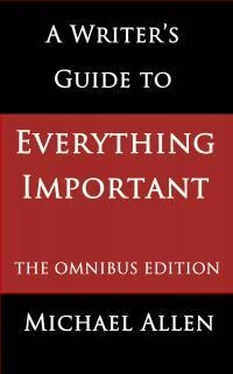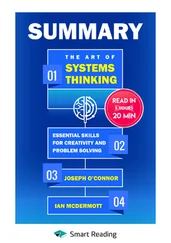Epstein was a big POD fan, and he predicted a situation whereby a simple coffee shop on your local high street might have a printing machine parked at the back. You would come in the door, order a coffee of your choice, and then order the latest J.K. Rowling to take out with you fifteen minutes later. That arrangement has not quite come to fruition yet, but there is now a contract in force between Xerox and Kodak to run such a facility through the Kodak photographic printing shops.
2.6.3 The beginning of ebooks
A second game-changing development was already being thought about by the few enterprising publishers who were not totally ignorant of computer technology. This was the prospect of reading books on a computer screen rather than on paper. It was the coming of electronic books, or ebooks as we now think of them.
Consider, by way of example, the US firm Renaissance E Books, which was founded in 1997. This firm was undoubtedly one of the earliest publishers of ebooks on the web. In 2003, shortly before his death, the original founder of the company sold the business to a consortium which appointed a well known publishing editor named Jean Marie Stine to run the show. And run it she did, very well.
Shortly after Jean Marie took charge, I signed a number of contracts with Renaissance to publish some of my own books in digital formats (long before the Kindle, please notice); these contracts were models of their kind.
In the early days, ebooks were mostly sold in pdf format. But you didn’t have to be very bright to see that, as soon as a really efficient and easily portable ebook reader was developed, something that you could carry around in your pocket or handbag, the sale of ebooks would really take off. More of that later.
2.6.4 Summary
The purpose of section 2.6 has been to gain an overview of trade publishing at the very end of the twentieth century.
Publishing firms are first and foremost businesses. That is to say, their purpose is to make money for the shareholders. As such, their performance has always been somewhere between awful and pitiful. For an examination of British publishers, seen from this perspective, please see Eric de Bellaigue’s 2004 book, British Book Publishing as a Business since the 1960s.
The brutal truth is that twentieth-century trade publishing’s business model was so weak that it was always going to have trouble in avoiding collapse; and, in the early years of the twenty-first century, change began to come about at an amazing speed. Traditional book publishing, which had barely been able to stagger along financially even without much challenge, was now going to find it very hard to cope.
The final outcome of the battle between traditional and digital is not yet known (see Part Three, which follows). But one thing is certain. You could hardly find a group of people less well qualified to cope with rapid technological developments than those who worked in book publishing in the year 2000.
PART 3: FINAL THOUGHTS – Will traditional publishing survive? And do writers really need it anyway?
3.1 The impact of the digital age
This book is being written in 2014, roughly fifteen years since the turn of the century, a period which we dealt with in Part Two. Part Three therefore looks at the impact of technology on the publishing business during the crucial years since 2000.
Like it or not – and some people hate it – the last ten years in particular have seen massive changes in the publishing industry, and it is instructive to compare what has happened there to what happened in other industries which were transformed by digital techniques.
Consider the business of photography. You can hardly fail to have noticed that these days everyone from the age of six upwards has a digital camera. And you’ve probably noticed that old-fashioned film has almost vanished from the shops. Grandma no longer carries a boasting book full of snapshots of her grandchildren: instead she has an iPad or a tablet, and she whizzes through the piccies by swiping her fingers across a screen.
What you may not have noticed, unless you’re very keen on photography, is that all this changed within just a very few years. More to the point, some hugely famous photographic firms simply went out of business – they were swept away by the surge of digital change. Legendary companies such as Polaroid, Bronica, Contax, Agfa, Konica, Minolta and Ilford all withered and died.
Christian Sandstrom did some research into what caused this commercial catastrophe; and he established that it wasn’t because the companies ignored digital developments. Far from it. They tried to get in the game. But they failed because their hard-won skills and business experience became irrelevant in the new market. One Hasselblad employee told Sandstrom that he could never have imagined that the shift would happen so fast and with such implications. Fundamentally, the older photographic companies failed because their core competence was not related to electronics, and because they were overtaken by the speed of events.
Plenty of other industries have been struggling to deal with digital change, and some research on this phenomenon has been done in academia, notably by Harvard business professor Clayton Christensen.
A major example, in an industry which is vastly greater in size and importance than book publishing, is the crisis which hit the manufacturers of mainframe computers, when the manufacturers of minicomputers came on the scene. And these manufacturers of minicomputers were in turn threatened by the manufacturers of personal computers; and tablets, and smartphones, and all like that.
The principal problem is that digital developments make everything cheaper. Consumers love this, but it creates serious problems for those who were doing things the old way, and would really like to go on doing things the old way, thank you very much.
The existing firms have to be really, really smart to survive. And do big publishers strike you as being really, really smart? Come on now, it’s a serious question.
The researchers tell us that almost nobody from the old order is able to undertake the necessary changes to survive in the new order. When the world changes and the industry doesn’t, the industry tends to disappear.
So, where does that leave traditional book publishing?
In trouble, that’s where. Anything further away from electronic competence than a modern publishing company would be pretty hard to find; and, as we all know, they are not exactly quick on their feet either. So, as the years went by, many observers, such as myself, began to feel that old-fashioned trade publishing might soon die the death. To tell the truth, we weren’t too bothered by that thought.
Well, disaster for the Big Five (and others) hasn’t quite happened. Not yet. But the dinosaurs in publishing are doing their best to help it along. It took them a long time to work out how to send emails, not so very long ago, and surely a web page wasn’t really necessary, was it? Just a fad. Would never catch on.
Watch this space.
3.2 How to sell a book to a traditional publisher
Here’s how the business worked at the end of the twentieth century, from a writer’s point of view. And this is how it still works. Sort of. ‘Works’ is a relative term.
Writer spends hundreds of hours working on a novel. Possibly from 1990 to 1995, let’s say. Then, in 1996, the author tries to approach publishers – only to find that they mostly don’t consider books sent in by nobodies. Even those firms which do accept submissions resort to some interesting dodges.
The Galleycat blog reported that some firms invent fake editors, who send out rejection letters on the firm’s behalf. One editor reported that, ‘A company that I worked at in the ’90s not only sent out rejection letters under a fake editor’s name, but this fake editor also had a voicemail box and an e-mail address.’ If a writer complains about her treatment, she can be told that Mr Smith has left the company.
Читать дальше












